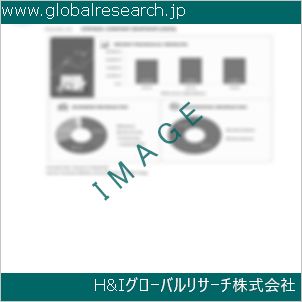Table of Contents
1 Industry Overview of Monoethylamine
1.1 Definition and Specifications of Monoethylamine
1.1.1 Definition of Monoethylamine
1.1.2 Specifications of Monoethylamine
1.2 Classification of Monoethylamine
1.3 Applications of Monoethylamine
1.3.1 Nuclear Application
1.3.2 Non-Nuclear Application
1.4 Industry Chain Structure of Monoethylamine
1.5 Industry Overview and Major Regions Status of Monoethylamine
1.5.1 Industry Overview of Monoethylamine
1.5.2 Global Major Regions Status of Monoethylamine
1.6 Industry Policy Analysis of Monoethylamine
1.7 Industry News Analysis of Monoethylamine
2 Manufacturing Cost Structure Analysis of Monoethylamine
2.1 Raw Material Suppliers and Price Analysis of Monoethylamine
2.2 Equipment Suppliers and Price Analysis of Monoethylamine
2.3 Labor Cost Analysis of Monoethylamine
2.4 Other Costs Analysis of Monoethylamine
2.5 Manufacturing Cost Structure Analysis of Monoethylamine
2.6 Manufacturing Process Analysis of Monoethylamine
3 Technical Data and Manufacturing Plants Analysis of Monoethylamine
3.1 Capacity and Commercial Production Date of Global Monoethylamine Major Manufacturers in 2023
3.2 Manufacturing Plants Distribution of Global Monoethylamine Major Manufacturers in 2023
3.3 R&D Status and Technology Source of Global Monoethylamine Major Manufacturers in 2023
3.4 Raw Materials Sources Analysis of Global Monoethylamine Major Manufacturers in 2023
4 Capacity, Production and Revenue Analysis of Monoethylamine by Regions, Types and Manufacturers
4.1 Global Capacity, Production and Revenue of Monoethylamine by Regions 2019-2024
4.2 Global and Major Regions Capacity, Production, Revenue and Growth Rate of Monoethylamine 2019-2024
4.3 Global Capacity, Production and Revenue of Monoethylamine by Types 2019-2024
4.4 Global Capacity, Production and Revenue of Monoethylamine by Manufacturers 2019-2024
5 Price, Cost, Gross and Gross Margin Analysis of Monoethylamine by Regions, Types and Manufacturers
5.1 Price, Cost, Gross and Gross Margin Analysis of Monoethylamine by Regions 2019-2024
5.2 Price, Cost, Gross and Gross Margin Analysis of Monoethylamine by Types 2019-2024
5.3 Price, Cost, Gross and Gross Margin Analysis of Monoethylamine by Manufacturers 2019-2024
6 Consumption Volume, Consumption Value and Sale Price Analysis of Monoethylamine by Regions, Types and Applications
6.1 Global Consumption Volume and Consumption Value of Monoethylamine by Regions 2019-2024
6.2 Global and Major Regions Consumption Volume, Consumption Value and Growth Rate of Monoethylamine 2019-2024
6.3 Global Consumption Volume and Consumption Value of Monoethylamine by Types 2019-2024
6.4 Global Consumption Volume and Consumption Value of Monoethylamine by Applications 2019-2024
6.5 Sale Price of Monoethylamine by Regions 2019-2024
6.6 Sale Price of Monoethylamine by Types 2019-2024
6.7 Sale Price of Monoethylamine by Applications 2019-2024
6.8 Market Share Analysis of Monoethylamine by Different Sale Price Levels
7 Supply, Import, Export and Consumption Analysis of Monoethylamine
7.1 Supply, Consumption and Gap of Monoethylamine 2019-2024
7.2 Global Capacity, Production, Price, Cost, Revenue, Supply, Import, Export and Consumption of Monoethylamine 2019-2024
7.3 USA Capacity, Production, Price, Cost, Revenue, Supply, Import, Export and Consumption of Monoethylamine 2019-2024
7.4 EU Capacity, Production, Price, Cost, Revenue, Supply, Import, Export and Consumption of Monoethylamine 2019-2024
7.5 China Capacity, Production, Price, Cost, Revenue, Supply, Import, Export and Consumption of Monoethylamine 2019-2024
7.6 Japan Capacity, Production, Price, Cost, Revenue, Supply, Import, Export and Consumption of Monoethylamine 2019-2024
8 Major Manufacturers Analysis of Monoethylamine
8.1 Manufacturer One
8.1.1 Company Profile
8.1.2 Product Picture and Specifications
8.1.2.1 Type I
8.1.2.2 Type II
8.1.2.3 Type III
8.1.3 Capacity, Production, Price, Cost, Gross and Revenue
8.1.4 Contact Information
8.2 Manufacturer Two
8.2.1 Company Profile
8.2.2 Product Picture and Specifications
8.2.2.1 Type I
8.2.2.2 Type II
8.2.2.3 Type III
8.2.3 Capacity, Production, Price, Cost, Gross and Revenue
8.2.4 Contact Information
8.3 Manufacturer Three
8.3.1 Company Profile
8.3.2 Product Picture and Specifications
8.3.2.1 Type I
8.3.2.2 Type II
8.3.2.3 Type III
8.3.3 Capacity, Production, Price, Cost, Gross and Revenue
8.3.4 Contact Information
8.4 Manufacturer Four
8.4.1 Company Profile
8.4.2 Product Picture and Specifications
8.4.2.1 Type I
8.4.2.2 Type II
8.4.2.3 Type III
8.4.3 Capacity, Production, Price, Cost, Gross and Revenue
8.4.4 Contact Information
8.5 Manufacturer Five
8.5.1 Company Profile
8.5.2 Product Picture and Specifications
8.5.2.1 Type I
8.5.2.2 Type II
8.5.2.3 Type III
8.5.3 Capacity, Production, Price, Cost, Gross and Revenue
8.5.4 Contact Information
…
9 Marketing Trader or Distributor Analysis of Monoethylamine
9.1 Marketing Channels Status of Monoethylamine
9.2 Traders or Distributors with Contact Information of Monoethylamine by Regions
9.3 Ex-work Price, Channel Price and End Buyer Price Analysis of Monoethylamine
9.4 Regional Import, Export and Trade Analysis of Monoethylamine
10 Industry Chain Analysis of Monoethylamine
10.1 Upstream Major Raw Materials Suppliers Analysis of Monoethylamine
10.1.1 Major Raw Materials Suppliers with Contact Information Analysis of Monoethylamine
10.1.2 Major Raw Materials Suppliers with Supply Volume Analysis of Monoethylamine by Regions
10.2 Upstream Major Equipment Suppliers Analysis of Monoethylamine
10.2.1 Major Equipment Suppliers with Contact Information Analysis of Monoethylamine
10.2.2 Major Equipment Suppliers with Product Pictures Analysis of Monoethylamine by Regions
10.3 Downstream Major Consumers Analysis of Monoethylamine
10.3.1 Major Consumers with Contact Information Analysis of Monoethylamine
10.3.2 Major Consumers with Consumption Volume Analysis of Monoethylamine by Regions
10.4 Supply Chain Relationship Analysis of Monoethylamine
11 Development Trend of Analysis of Monoethylamine
11.1 Capacity, Production and Revenue Forecast of Monoethylamine by Regions and Types
11.1.1 Global Capacity, Production and Revenue of Monoethylamine by Regions 2024-2029
11.1.2 Global and Major Regions Capacity, Production, Revenue and Growth Rate of Monoethylamine 2024-2029
11.1.3 Global Capacity, Production and Revenue of Monoethylamine by Types 2024-2029
11.2 Consumption Volume and Consumption Value Forecast of Monoethylamine by Regions, Types and Applications
11.2.1 Global Consumption Volume and Consumption Value of Monoethylamine by Regions 2024-2029
11.2.2 Global and Major Regions Consumption Volume, Consumption Value and Growth Rate of Monoethylamine 2024-2029
11.2.3 Global Consumption Volume and Consumption Value of Monoethylamine by Types 2024-2029
11.2.4 Global Consumption Volume and Consumption Value of Monoethylamine by Applications 2024-2029
11.3 Supply, Import, Export and Consumption Forecast of Monoethylamine
11.3.1 Supply, Consumption and Gap of Monoethylamine 2024-2029
11.3.2 Global Capacity, Production, Price, Cost, Revenue, Supply, Import, Export and Consumption of Monoethylamine 2024-2029
11.3.3 USA Capacity, Production, Price, Cost, Revenue, Supply, Import, Export and Consumption of Monoethylamine 2024-2029
11.3.4 EU Capacity, Production, Price, Cost, Revenue, Supply, Import, Export and Consumption of Monoethylamine 2024-2029
11.3.5 China Capacity, Production, Price, Cost, Revenue, Supply, Import, Export and Consumption of Monoethylamine 2024-2029
11.3.6 Japan Capacity, Production, Price, Cost, Revenue, Supply, Import, Export and Consumption of Monoethylamine 2024-2029
12 New Project Investment Feasibility Analysis of Monoethylamine
12.1 New Project SWOT Analysis of Monoethylamine
12.2 New Project Investment Feasibility Analysis of Monoethylamine
13 Conclusion of the Global Monoethylamine (CAS 75-04-7) Industry 2024 Market Research Report
| ※参考情報 エチルアミン(モノ)は、化学式C2H7Nを持つ有機化合物で、アミン類に分類される重要な化学物質です。モノエチルアミンは、無色の液体であり、アミン特有の刺激臭を持っています。室温で揮発性が高く、水溶性も持ち合わせているため、さまざまな用途で利用されています。CAS番号は75-04-7です。 エチルアミンは、エチレンのアミン化反応により、エタノールよりも簡単に合成されます。アミンは、窒素原子が炭素と結合した分子であり、アミン類は通常、1級、2級、3級に分類されます。モノエチルアミンは、1級アミンに属し、1つのエチル基が窒素原子に結合していることが特徴です。この構造により、エチルアミンは他の化合物と反応しやすく、さまざまな化学反応に参加することができます。 エチルアミンは、主に農薬、医薬品、染料、香料、さらにはプラスチックや化粧品の製造に用いられています。特に、農業分野では、除草剤や害虫駆除剤の成分として使用されることが多く、作物の生育を助けるために欠かせない役割を果たしています。また、エチルアミンは、医薬品の中間体としても重要です。多数の医薬品がエチルアミンを基にした分子設計によって開発されており、その効能によって疾病治療に寄与しています。 さらに、エチルアミンは染料や香料を合成する際にも利用されます。具体的には、数多くの天然および合成香料の原材料とされており、たとえばパフュームやフレグランス製品において重要な成分となります。染料製造に関しては、エチルアミンが中間体として使われ、色素や染料の合成に寄与しています。 エチルアミンは、化学反応の中でにおいのある中間体を形成することができるため、プラスチック産業でも重要です。ポリウレタンやポリエステルの合成に利用され、その特性を向上させるために利用されることが多いです。加えて、エチルアミンは、合成樹脂やコーティング剤にも使われ、特に耐久性や熱安定性を高める効果があります。 環境への影響を考慮すると、エチルアミンは適切に取り扱う必要があります。適切な安全対策が求められ、エチルアミンの取り扱いにおいては、適切な保護具を着用し、換気を十分に行うことが重要です。また、直接摂取や皮膚への接触を避けるために、厳重な管理が必要です。エチルアミンが環境中に放出されると、土壌や水質に影響を与える可能性がありますので、廃棄物処理が適切に行われることも重要です。 近年では、エチルアミンに関連する化学技術の発展が進んでいます。これには、生産プロセスの効率化や環境への負荷低減を目指すための研究が含まれます。また、エチルアミンを用いた新しい合成経路の開発などが進められており、より持続可能な方法での利用が模索されています。 まとめとして、エチルアミン(モノ)は、さまざまな用途を持つ重要な化学物質であり、農薬や医薬品、染料、さらにはプラスチック製造など多岐にわたる分野で利用されています。これらの用途において、エチルアミンの特性を活かすことで効率的な産業プロセスが実現され、今後もその利用の幅は広がると考えられています。一方で、化学物質としての特性により、適切な取り扱いと環境への配慮が必要です。エチルアミンの関連技術は進化を続けており、新しい可能性が開かれることが期待されます。 |
❖ 免責事項 ❖
http://www.globalresearch.jp/disclaimer












